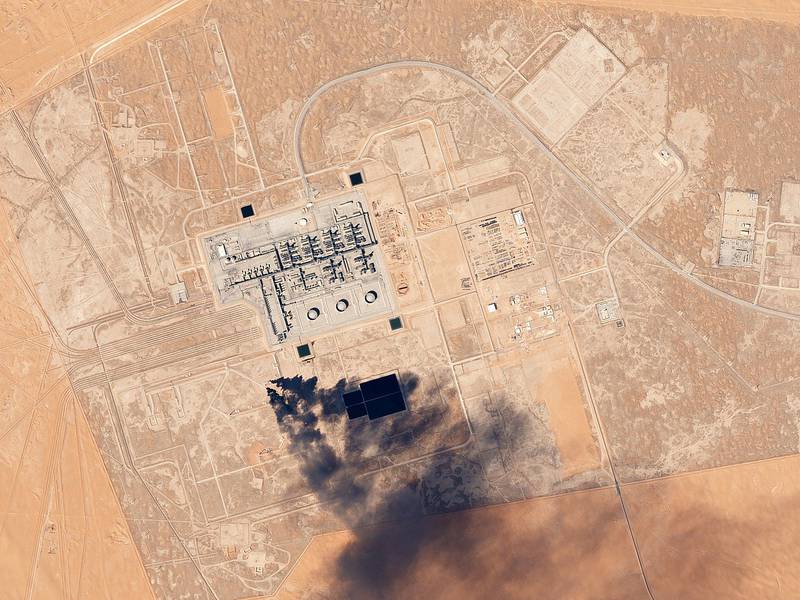Starting in 1961, the National Reconnaissance Office has been tasked with designing, building, launching and operating the United States’ fleet of intelligence satellites. Over the years, that mission has evolved, bolting on new components and missions.
Now in 2020, the NRO is looking to change once again, moving beyond the status quo by issuing a new set of contracts toward the end of this year that will reshape the intelligence community’s relationship with commercial imagery.
Peter Muend, the head of NRO’s commercial imagery efforts, told C4ISRNET that the agency is “obviously very committed to utilizing commercial imagery to the maximum extent practical in support of defense, national security and all the other mission areas that we serve.”
“I think the best philosophy that underpins that is one that says ‘We really are looking to buy everywhere we can and only build what we have to—what’s really not available on the commercial market,‘” Muend said.
An important condition to that approach is that the commercial imagery market actually have commercial support. In other words, Muend doesn’t want any of these companies to exist solely to support government requirements. There should be a real commercial market for these capabilities, which will help drive down costs for the government.
To understand the agency’s approach to commercial imagery, it’s best to go back to 2017, when the NRO took over the role of acquiring commercial satellite imagery on behalf of the intelligence community from the National Geospatial-Intelligence Agency. Under this new paradigm, NGA serves as the geospatial intelligence (GEOINT) functional manager, determining what imagery the intelligence community needs and writing those requirements, but it’s up to NRO to determine how those requirements are filled.
RELATED

Then in 2018, another step occurred when the NGA’s EnhancedView contract was transferred to NRO, which issued a follow-on contract to Maxar shortly thereafter. That single EnhancedView contract has been one of the primary source of commercial imagery for the intelligence community for years.
The goal now is to start the move beyond EnhancedView. That process started in 2019, when the NRO issued a request for information (RFI) to see what types, quality and quantity of imagery industry could provide. For Muend, that RFI sent a message to industry: the intelligence community was looking to the commercial sector for imagery that went beyond the requirements, capacity and capability the government had sought in the past.
That RFI initially led to a trio of study contracts for Maxar, BlackSky and Planet.
“Really, the purpose of those study contracts was to serve a couple purposes, one being to take a look at their systems and really understand their performance from a modeling and simulation standpoint to really see what they can do and how they would measure up and meet our capability,” said Muend. “The other part was really to assess imagery, because of course a lot of the input we got back from the RFI emphasized the quality of the imagery and how much they could deliver. It’s one thing to get an RFI response. It’s another thing to actually formally assess and measure.”
In the year since those first study contracts were issued, the agency has issued a handful of other study contracts, primarily to companies offering different phenomenologies than electro-optical imagery, including synthetic aperture radar and radio frequency sensing. Muend clarified that those study contracts were less focused on purchasing data from those phenomenologies and more focused on ensuring the agency’s systems could interface with those phenomenologies.
“We certainly see a very vibrant future ahead for those phenomenologies. We’re excited for them to continue to mature and we’re certainly looking forward to taking advantage of them in the future,” said Muend. “But again, the specific contracts we’re moving forward with toward the end of the year are more focused on the electro-optical side.”
Back on that electro-optical side of things, the study contracts have been mutually beneficial, said Muend. Not only has NRO learned what capabilities are available commercially and how they can be incorporated, the vendors have gotten a better understanding of what the agency is looking for.
“And then on the imagery side, we’ve certainly learned a lot — certainly some of the differences between what the glossy advertising sheets say and then what’s really available when looked at analytically in the way that we and the larger community do,” said Muend.
When pressed on that point, Muend declined to characterize whether any company had failed to live up to or superseded its claims.
All of those efforts are leading up to source selection and contract awards toward the end of the year. Muend noted that there were likely to be awards to multiple companies and those contracts will specifically pertain to electo-optical imagery.
“One thing that we have seen out of our study contracts and our market research is that no single provider can currently meet what we’re asking for out of our requirements. So it is going to be an aggregate of capability from multiple vendors, and in addition it’s going to be something that they’re going to have to grow into over time, that they expand their capabilities to meet our needs,” he explained.
As a precursor to that decision, NRO issued an RFI in June to help the agency standardize end user license agreements for imagery. Those agreements govern how the agency is able to use and share the imagery it collects, explained Muend. As NRO prepares to begin purchasing imagery from multiple companies, it wants to make sure those agreements are clear, intuitive and broadly uniform.
“We’re very, very excited about the future, about establishing a new set of operational imagery contracts to not only take advantage of our current industry base, but the growing new entrants and new providers as well,” said Muend. “We’re eager to get moving.”
Nathan Strout covers space, unmanned and intelligence systems for C4ISRNET.








